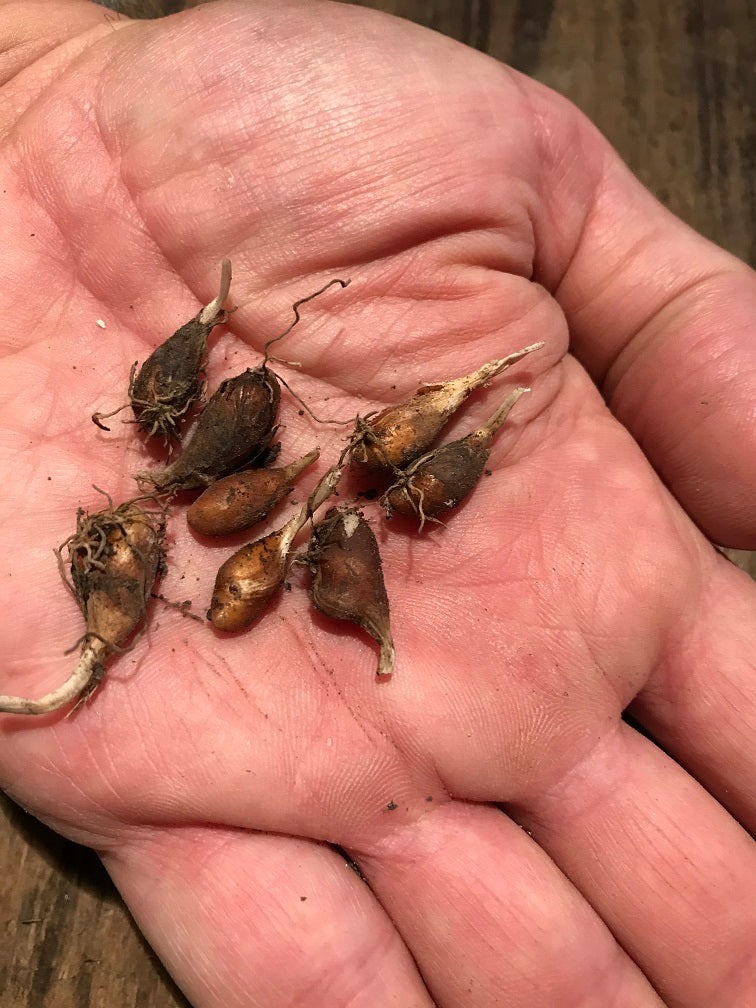Yellow Trout Lily - Erythronium americanum
Yellow Trout Lily - Erythronium americanum
Couldn't load pickup availability
The Yellow Trout Lily is, possibly, the most beautiful of the spring ephemerals. One of the earliest flowers to bloom in the forest, sometimes in vast colonies. Although typically fewer than 1% of the colony actually blooms. The rest of the bulbs are too small or too crowded to produce flowers. But the leaves are also beautiful, mottled like a brook trout. The flowers attract pollinators, and one of the nicest spring spectacles is a colony of trout lilies full of wild bees. 🐝
Cultivation: A woodland species, it grows best under mature mixed hardwoods (oaks, maples, etc.). The leaves emerge shortly after the snow melts, the flowers not far behind. The plant takes advantages of the two months of sunlight before the canopy closes. It needs rich, loamy soil, ideally with lots of leaf litter. The natural tendency of the plant to bloom sparsely can be dramatically improved by spacing the bulbs and providing lots of compost. Ours bloom densely and consistently under these conditions.
Food preparation: Both the leaves and the bulbs are edible, and both are tasty. The bulbs are very small, and since they take years to mature to flowering size (5 to 7 years from seed), not exactly an ideal staple crop. But in a managed woodland, growing alongside other spring edibles (ramps and spring beauties, for instance), it can produce a significant amount of delicious food, and an awe-inspiring show in the spring. Proper harvest and management will actually improve and expand the colony.
Ethnobotany: All erythroniums have been used in the Americas and in parts of Asia for food and other uses. The yellow trout lily is on the small side compared to some of its western cousins (Erythnonium grandiflorum, for instance) or Erythonium japonicum, used for dumplings, soups, etc. in Japan. But next to ramps, it’s probably the most desirable of all the spring woodland flowers.
Share




